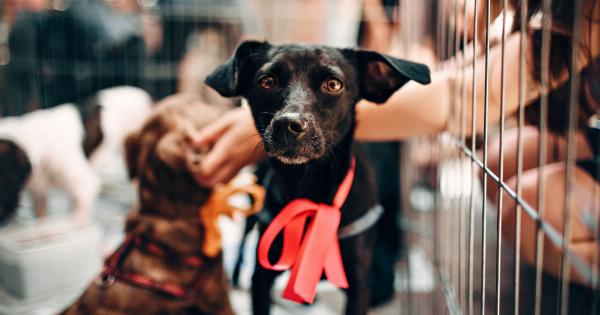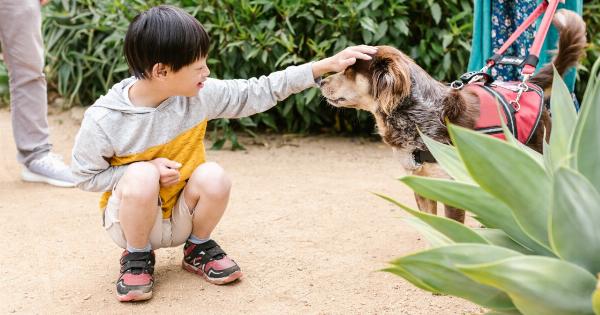Having a pet dog can bring immense joy and companionship to our lives. As responsible dog owners, it is our duty to ensure the well-being and health of our furry friends. One crucial aspect of their overall health is evaluating their fear and sight.
In this article, we will delve into the importance of understanding fear and sight in dogs and how it affects their overall quality of life.
Fear in Dogs
Fear is a natural emotion in dogs, just like it is in humans. However, excessive fear or anxiety can significantly impact a dog’s behavior and well-being.
It is crucial to evaluate and address fear-related issues in dogs to provide them with a safe and comfortable environment.
Signs of Fear in Dogs
Dogs express fear through a variety of behaviors and body language. Some common signs of fear in dogs include:.
- Tail tucking
- Whining or whimpering
- Trembling or shaking
- Attempting to escape or hide
- Excessive barking or growling
- Panting excessively
- Showing signs of aggression
- Pacing or restlessness
- Dilated pupils
- Yawning, lip licking, or drooling
If you notice any of these signs in your dog, it is essential to identify the root cause of their fear and take appropriate measures to address it.
Common Causes of Fear in Dogs
There are various reasons why dogs may experience fear or anxiety. Some common causes include:.
- Past trauma or abusive experiences
- Lack of socialization during puppyhood
- Genetic predisposition
- Loud noises, such as fireworks or thunderstorms
- Separation anxiety
- New environments or unfamiliar people
Understanding the cause of your dog’s fear is crucial in developing an appropriate plan to help them overcome it.
Seeking Professional Help
If your dog’s fear is severe or significantly affecting their daily life, it may be necessary to seek the assistance of a professional animal behaviorist or veterinarian specializing in behavior.
These experts can assess your dog’s specific fear triggers and develop a tailored behavior modification plan to help your furry friend feel more comfortable and confident.
Canine Sight
While dogs are known for their exceptional sense of smell and hearing, their vision is also an essential aspect of their perception of the world around them.
Understanding how dogs see can help us better understand their behaviors and address any potential vision-related issues.
Differentiating between Human and Canine Vision
Dogs have a different visual system compared to humans. While humans have three types of color-detecting cone cells in their eyes (red, green, and blue), dogs only have two (yellow and blue).
This means that dogs have limited color vision and are not able to perceive the range of colors that humans can.
Additionally, dogs have superior night vision compared to humans. Their eyes contain a high number of rod cells, which are responsible for detecting movement and functioning well in low-light conditions.
This adaptation allows dogs to navigate and see clearly in dimly lit environments.
Common Vision Problems in Dogs
Just like humans, dogs can experience various vision problems, including:.
- Cataracts
- Progressive retinal atrophy (PRA)
- Glaucoma
- Corneal ulcers
- Blindness
If you notice any changes in your dog’s behavior or suspect they may have vision problems, it is crucial to consult with a veterinarian specializing in ophthalmology.
Early detection and treatment can help prevent further deterioration of your dog’s vision and ensure their overall well-being.
How to Promote Good Vision Health in Dogs
There are several ways you can promote good vision health in your dog:.
- Regular veterinary check-ups: Regular visits to the veterinarian can help detect any potential vision problems at an early stage.
- Diet and nutrition: Providing your dog with a balanced and nutritious diet can support overall eye health.
- Protection from sun exposure: Just like humans, dogs can be susceptible to sun damage. Avoid exposing your dog to direct sunlight for extended periods, especially during peak hours.
- Regular exercise: Regular physical activity can help maintain your dog’s overall health, including their vision.
- Environmental safety: Ensuring a safe environment for your dog can help prevent accidents or injuries that could potentially affect their vision.
By incorporating these practices into your dog’s routine, you can contribute to their overall vision health and well-being.
Conclusion
Evaluating fear and sight in dogs is crucial for their overall well-being and quality of life.
Understanding and addressing fear-related issues can help create a safe and comfortable environment for your furry friend, while being aware of their visual capabilities and potential vision problems can ensure appropriate preventive measures and early intervention. By prioritizing the evaluation of fear and sight in dogs, we can provide them with the love, care, and attention they deserve.





























